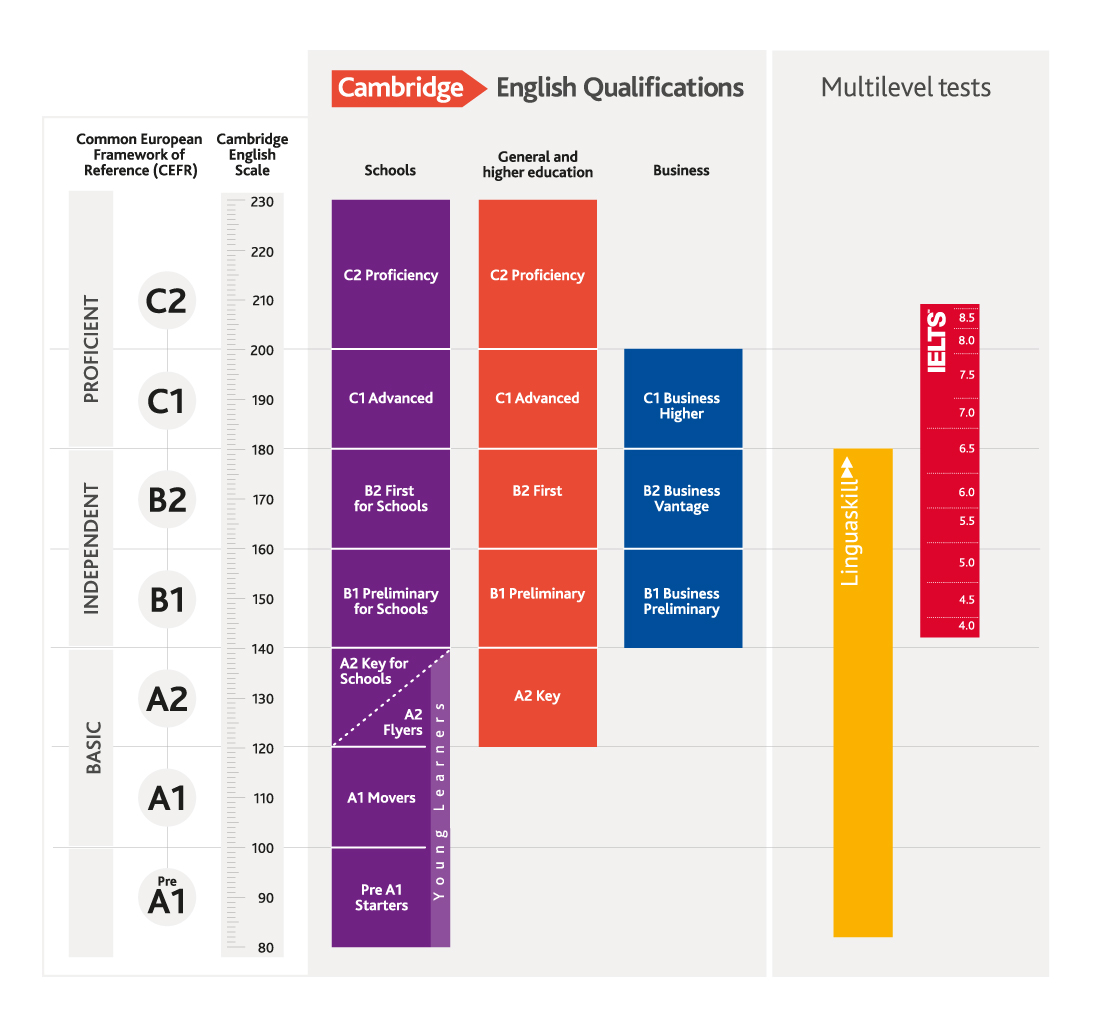What’s English CEFR level
CEF Levels
The Common European Framework of Reference for Languages (CEF or CEFR) was put together by the Council of Europe as a way of standardising the levels of language exams in different regions. It is very widely used internationally and all important exams are mapped to the CEFR.
There are six levels: A1, A2, B1, B2, C1, C2. These are described in the table below.
| Council Levels | Description |
| C2 | The capacity to deal with material which is academic or cognitively demanding, and to use language to good effect at a level of performance which may in certain respects be more advanced than that of an average native speaker. |
| C1 | The ability to communicate with the emphasis on how well it is done, in terms of appropriacy, sensitivity and the capacity to deal with unfamiliar topics. |
| B2 | The capacity to achieve most goals and express oneself on a range of topics. |
| B1 | The ability to express oneself in a limited way in familiar situations and to deal in a general way with nonroutine information. |
| A2 | An ability to deal with simple, straightforward information and begin to express oneself in familiar contexts. |
| A1 | A basic ability to communicate and exchange information in a simple way. |

How to Test?
Related posts
Learn Chinese when you browser webpages
Relingo Mobile 1.2 released, learn English with Youtube videos
Browser Extension 3.1 released, restructure expirence
What’s English CEFR level
Relingo 2.5.0: Unlock a World of English Learning with YouTube Subtitle Customization
Navigating CEFR Levels: A Guide to Understand Your English Proficiency
Tips for practicing English listening
Master English Vocabulary with Relingo
Relingo: Effortless Ways to Learn English Vocabulary with Online Resources

